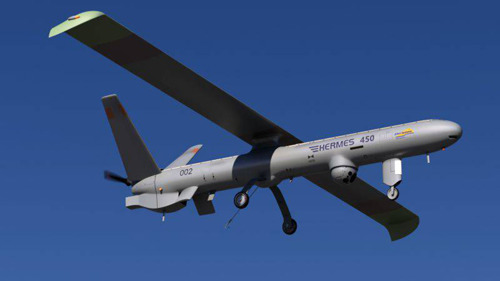Due to the recent conflict in the Ukraine, much has been made of the impact of unmanned aircraft systems (UAS), or “drones”, in the theatre of battle; the involvement of AeroEnvironment’s Switchblade, and the Turkish-made Bayraktar TB-2 have shone a spotlight on the field of weapons which includes General Atomics’ MQ family of UAS. Unmanned systems have substantially changed the complexion of modern warfare and, as a result, technologies supporting these platforms are rapidly evolving. At the center of these systems is power…power for flight avionics and onboard systems to maximise flight time and support the myriad of requirements including surveillance, target recognition, terrain mapping, munitions and Electronic Warfare (EW) payloads, all while maintaining stealth.
Two main design drivers relative to integrated UAS power systems are optimization for cost, size, weight, and power (C-SWaP design) and system ruggedization. As an experienced power supply and UPS solution provider for naval applications and, more recently, land-based tactical vehicles, Gresham Power Electronics has decades of expertise in designing power systems for similarly challenging environments.
Today’s leading edge power system design is being driven by the increasing sophistication of mission for unmanned platforms as well as the embedded intelligence required to carry out these missions. Drone-to-drone communications can be particularly power-hungry applications where signal power equates to communication distance. Advanced electronic warfare applications utilizing RF systems on a chip (RFSOC) require cleanliness and high-fidelity of power signals for accurate signal processing; edge processing requires sufficient onboard computing power to utilise artificial intelligence for real-time mission decisions.

Specific to unmanned platforms, power source and power conversion are much different considerations than land-based systems. For UAS applications, power delivery systems need to be tailored to applications such as loitering, long-range surveillance, and harsh medium altitude endurance. Typically these applications include variable voltage and frequency alternator/generator designs that create a stabilised DC bus coupled with power distribution units (PDUs) that deliver high power output and the ability to work simultaneously with other power converters.
Additionally, with the increasing deployment of UAS assets in military scenarios, Gresham Power Electronics is anticipating the need for innovative power replenishment systems to minimize drone down time in mission-critical situations. Gresham is already looking towards proven approaches utilised in other industries, such as flash charging in battery electric bus (BEEB) e-mobility applications, to assess potential for use in unmanned applications which would require redesign and reengineering of the UAS power management system from the ground up.
These are the areas where attention is focused and rapid new developments should be anticipated. Expect the experience of Gresham Power, and its parent company Gresham Worldwide, to drive the development of Purpose Built, Mission Driven integrated power supply solutions that will power the next generation of warfare platforms.
For more information, please visit our website: https://www.greshampower.com/ or call us on 01722 413 060











UK Enters ‘Golden Age of Nuclear’
Apologies if this is a duplicate post - a glitch appears to have removed the first one: > While I welcome the announcement of this project, I note...